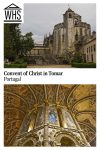Convent of Christ in Tomar
By Barbara Radcliffe Rogers
What is the Convent of Christ in Tomar?
The monumental Convent of Christ complex that crowns a hilltop in Tomar is a well-preserved monastic center that was built as the headquarters of the Knights Templar in Portugal. When the order was dissolved and outlawed by the Pope in 1312, the Portuguese King welcomed its members to a new Order of Christ, also based at the convent in Tomar.
Disclosure: This article contains affiliate links. Making a purchase through an affiliate link will mean a small commission for this website. This will not affect your price.
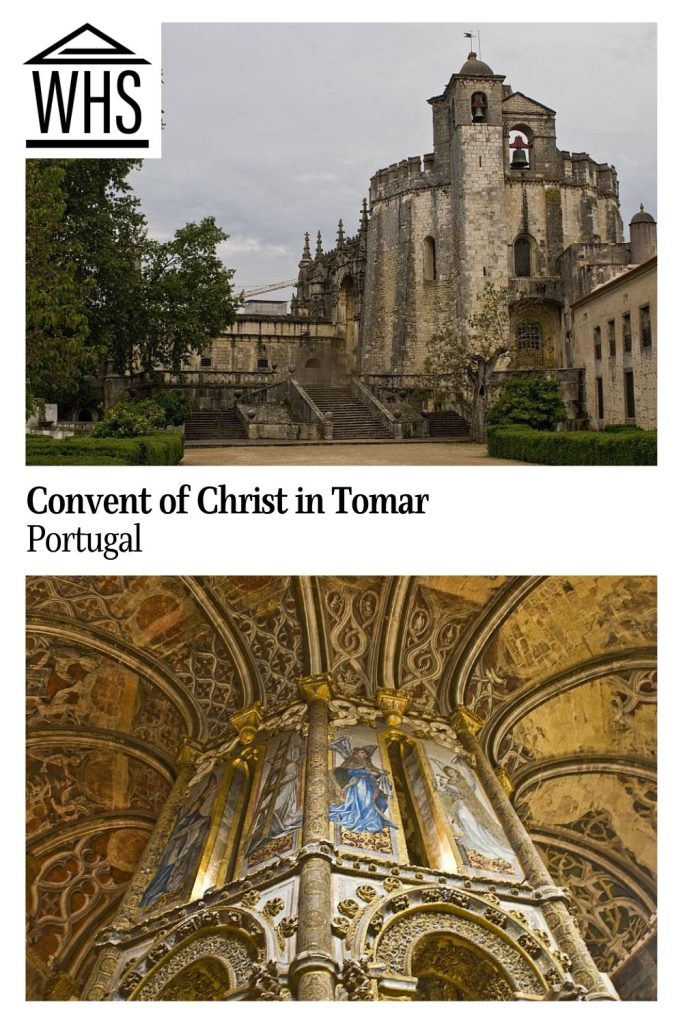
The central feature is the 12th-century Charola, a polygonal church modeled on the Holy Sepulcher in Jerusalem. Eight tall pillars separate the central choir from the ambulatory encircling it. Adjoining the church are the Sacristy, the Cemetery Cloister, the Laundry Cloister, the Infirmary, the Knights Hall and the pharmacy.
Built at different times, these showcase various architecture styles, with elements of Romanesque, Gothic, Renaissance, Mannerist and Baroque, as well as the uniquely Portuguese Manueline. This lavish decorative style combines elements of Moorish and Gothic, with a distinctive use of nautical elements.
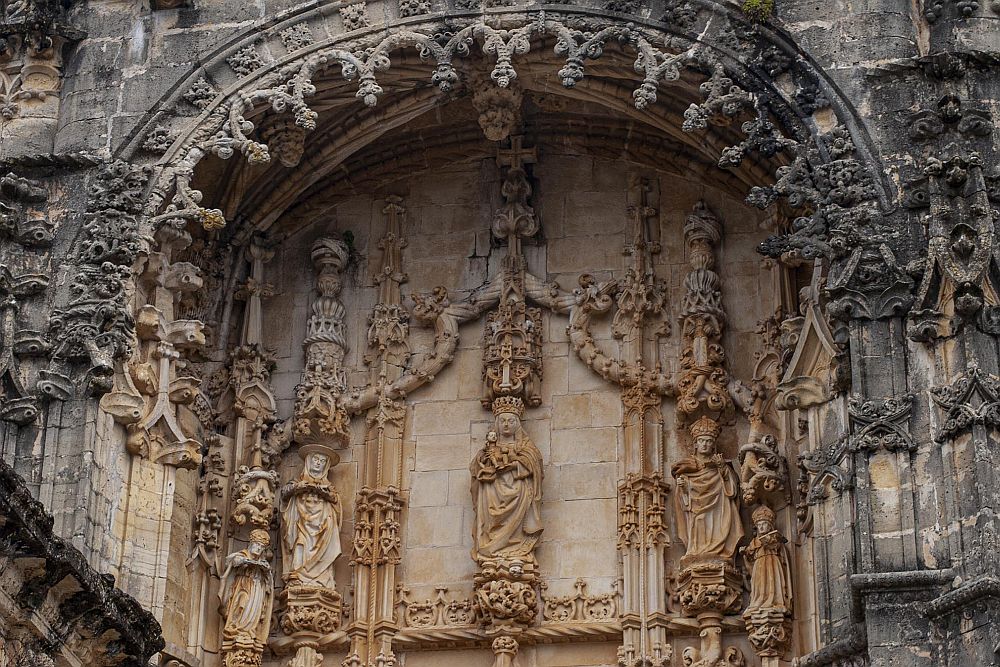
Why is the Convent of Christ a UNESCO World Heritage site?
UNESCO terms the Templar’s church and the adjoining Renaissance buildings as “a masterpiece of human creative genius” and cites the 16th-century Chapterhouse window and oculus as “the most accomplished expression of Manueline decorative style.”
Significant, too, is the authenticity of the complex and its decoration. Original plans have been maintained, and original materials and techniques are used in its conservation and restoration. Paintings, frescos and gilt statuary have been carefully restored. The Charola is “one of the typical rotondas of Templar architecture of which few examples are still extant in Europe.”
Portuguese history from the Reconquest to the Renaissance and the Age of Discovery intertwines with the story of the Templars and the Order of Christ. Tomar preserves important artistic evidence of all these eras.
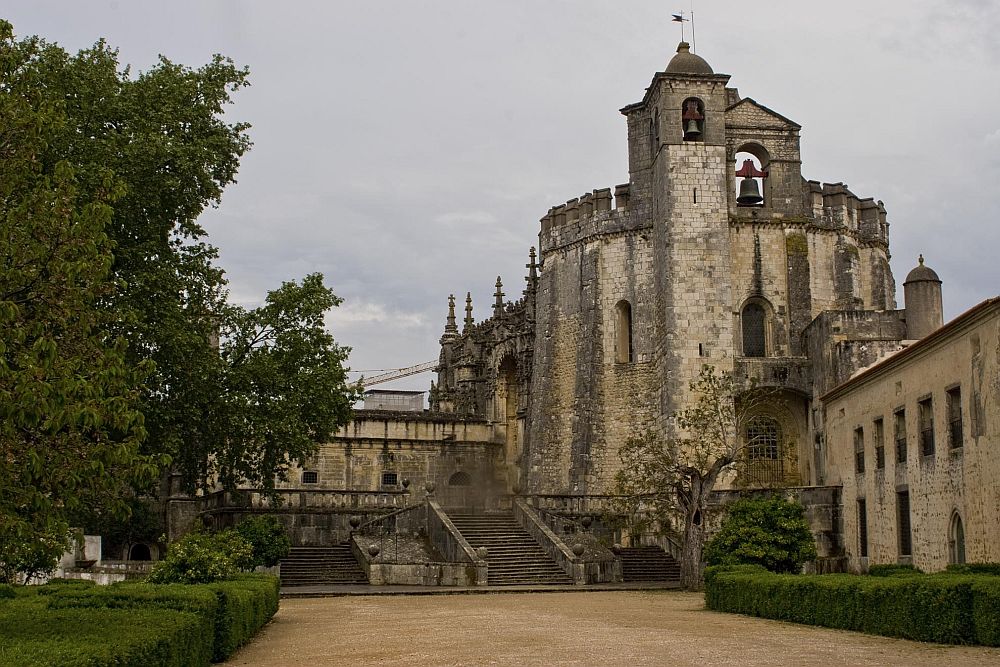
What can you expect on a visit to the Convent of Christ?
Expect to be wowed by the grandeur of the buildings and their beautifully preserved and restored decoration. If you have not visited neighboring Batalha or the convent in Belem, this may be your first introduction to the Manueline style. Manueline stone carving invites a “treasure hunt” to identify the various marine motifs, so take time to look more closely at the intricate designs.
The Convent of Christ is more than a feast for the senses, it is one of the most important historic sites in Portugal, too, and part of the larger history of Europe in the turbulent years following the reconquest of Iberia from the Moors. As you tour the complex, you cannot help but feel some of this legacy lingering here.
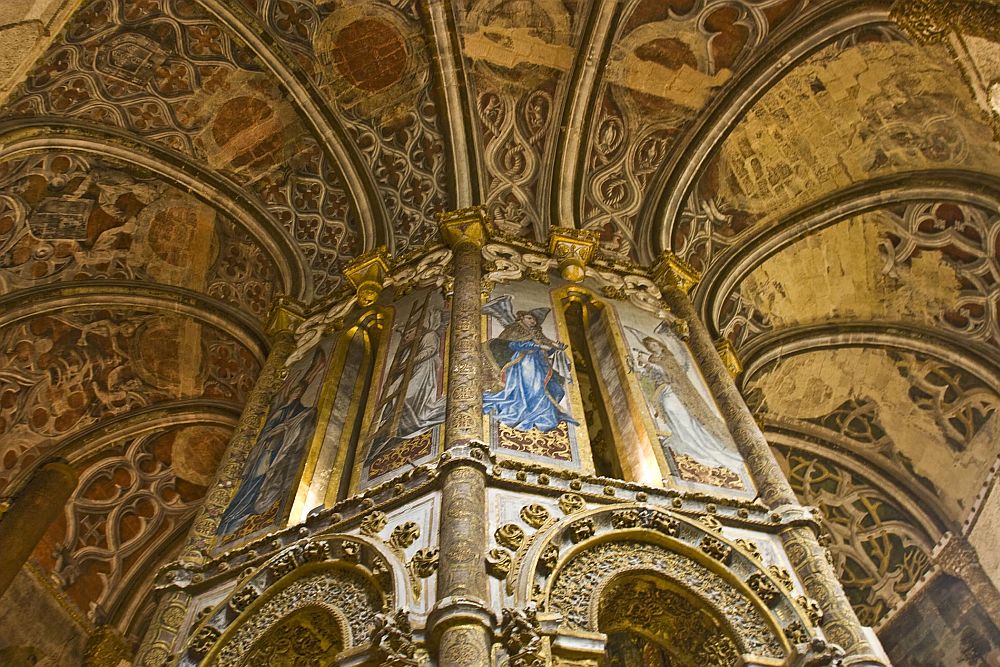
Is it worth visiting the Convent of Christ?
The Convent of Christ at Tomar is definitely worth fitting into any visit to central Portugal. It will especially appeal to those with an interest in history or architecture, as well as those who have read The DaVinci Code and are familiar with the story of the Knights Templar. This is the most important stop on Portugal’s Knights Templar trail.
Even visitors with no great interest in either history or architecture will be awed by the grandeur and find its story fascinating. The Convent of Christ is worth a trip of its own, and the town of Tomar is a pleasant stopping point on a road trip between Lisbon and Coimbra. Plan to spend at least an hour to see all the buildings.
Alternatively, you could take a day trip from Lisbon.
Tips for visiting the Convent of Christ
- Expect a lot of walking, as the site is quite large and you’ll want to explore all the buildings and cloisters.
- Tomar is easy to combine with the great monasteries of Alcobaça and Batalha, but all three would be too much to crowd into a single day. You can visit all three on a money-saving combined ticket.
- Visitors interested in Jewish history will also want to see the well-preserved medieval synagogue and ritual bath in Tomar.
- Tomar is the scene of one of Portugal’s most colorful festivals, the Festa dos Tabuleiros, when girls parade through the streets balancing columns of bread and flowers on their heads.
Find your accommodations in Tomar by clicking on the map below:
Where is Tomar?
Tomar is in central Portugal, between Lisbon and Coimbra, at 39° 36′ 17″ North 8° 25′ 3″ West.
By Train: Tomar is about 2 hours from Santa Apolónia station in Lisbon and trains run frequently.
By Car: Driving time from Lisbon is about an hour and 45 minutes via A1 and IC9. There is free parking adjacent to the Convent of Christ.
For more information about The Convent of Christ in Tomar, see its official website.
Have you been to the Convent of Christ in Tomar? If so, do you have any additional information or advice about this UNESCO World Heritage site? Please add your comments below!

